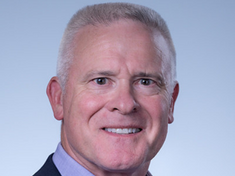-
What Can California Teach the Federal Government on Air Pollution? A Conversation With Richard Corey
December 2, 2022 By Harriet Alice Taberner In August 2022, California’s Air Resources Board (CARB) announced a new regulation requiring all new vehicles sold in California to be zero emission by 2035, paving the way for an emission-free future. But what exactly is CARB—and why do its decisions carry such weight? To answer those questions and more, the Wilson Center’s Environmental Change and Security Program partnered with Climate Break (with support from the Henry M. Jackson Foundation) for a joint podcast featuring CARB’s former Executive Officer, Richard Corey. The conversation ranged from the agency’s history, to what Corey has learned about how to implement effective policy, and his view of lessons for the federal government as it moves more aggressively on climate action.
In August 2022, California’s Air Resources Board (CARB) announced a new regulation requiring all new vehicles sold in California to be zero emission by 2035, paving the way for an emission-free future. But what exactly is CARB—and why do its decisions carry such weight? To answer those questions and more, the Wilson Center’s Environmental Change and Security Program partnered with Climate Break (with support from the Henry M. Jackson Foundation) for a joint podcast featuring CARB’s former Executive Officer, Richard Corey. The conversation ranged from the agency’s history, to what Corey has learned about how to implement effective policy, and his view of lessons for the federal government as it moves more aggressively on climate action.In August 2022, California’s Air Resources Board (CARB) announced a new regulation requiring all new vehicles sold in California to be zero emission by 2035, paving the way for an emission-free future. But what exactly is CARB—and why do its decisions carry such weight? To answer those questions and more, the Wilson Center’s Environmental Change and Security Program partnered with Climate Break (with support from the Henry M. Jackson Foundation) for a joint podcast featuring CARB’s former Executive Officer, Richard Corey. The conversation ranged from the agency’s history, to what Corey has learned about how to implement effective policy, and his view of lessons for the federal government as it moves more aggressively on climate action.
Climate Break’s Ken Alex observes that while CARB’s August move was momentous, “this is far from the first time that the board has played a major role in setting ambitious environmental policy for California.
Corey notes that the board was established in 1967 through a law signed by then Governor Ronald Regan “in response to public pressure for action to deal with air pollution.” He joined the agency in 1985, shortly after key legislation in Sacramento directed CARB to establish a Toxics Program to develop regulations to reduce the emissions of toxic pollutants. In the early days of CARB’s existence, multiple regions of California “had air quality that 200 times a year exceeded multiple health-based air quality standards.”
But a lot has changed over the past five decades. “We haven’t had a stage one or stage two ozone alert for twenty years,” notes Corey. “A vehicle today is 99 percent cleaner in terms of NOx emissions…and PM [particulate matter] emissions.” The agency has made a tangible difference. “CARB, along with many partners, has had a huge role in cleaning up fuels and transitioning out of combustion everywhere we can.”
Major challenges are ever present, however, and often require multi-level partnerships to fix them. For example, Corey says that although “significant reductions in combustion of petroleum” have occurred, “we have a lot more vehicles and [are] burning more fuel than we were back when the agency was created. A lot more.” Vehicle miles traveled (VMT) are also exponentially higher. Why? Corey says the reasons stem largely from the demands of an economy in which Californians “want jobs. They want housing. And that has created an environment of sprawl.” This demand, in turn, generates the ongoing need for petroleum and high emissions that overshadow gains made in reducing pollution.
“We need to work more effectively with jurisdictions and basic incentive structures that lead to and support sprawl,” stresses Corey. He believes that much more needs to be done on affordable housing and other measures. Breaking the structure that is based on the need for a vehicle is crucial. “People want to work, play, recreate in the same location without the need for a vehicle.”
Yet California’s achievements are undeniable, and Alex asks Corey: “What would you like the federal government to learn from California?” Corey points to establishing specific targets— accompanied by the ability to measure accomplishments and the authority to actually take action. He adds that taking action should be done via regulations and incentives. Looking at the air pollution holistically, rather than in compartmentalized blocks, is the key to progress. Transparency and accountability cannot be underestimated, Corey concludes, and “partnerships are fundamental” to reaching the goals set by governments.
Photo Credit: Headshot of Richard Corey, courtesy of Climate Break.
 A Publication of the Stimson Center.
A Publication of the Stimson Center.




